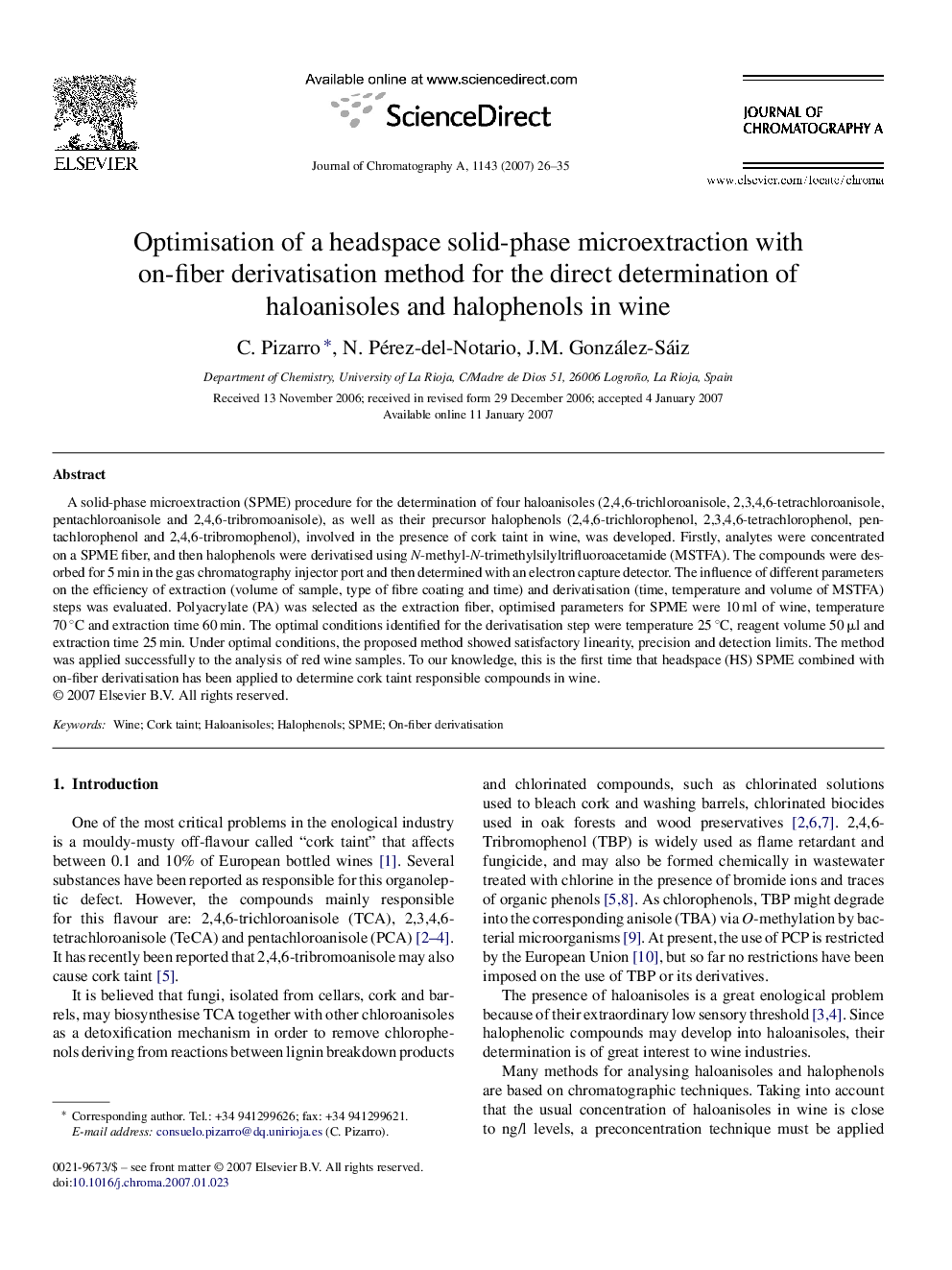| Article ID | Journal | Published Year | Pages | File Type |
|---|---|---|---|---|
| 1211149 | Journal of Chromatography A | 2007 | 10 Pages |
A solid-phase microextraction (SPME) procedure for the determination of four haloanisoles (2,4,6-trichloroanisole, 2,3,4,6-tetrachloroanisole, pentachloroanisole and 2,4,6-tribromoanisole), as well as their precursor halophenols (2,4,6-trichlorophenol, 2,3,4,6-tetrachlorophenol, pentachlorophenol and 2,4,6-tribromophenol), involved in the presence of cork taint in wine, was developed. Firstly, analytes were concentrated on a SPME fiber, and then halophenols were derivatised using N-methyl-N-trimethylsilyltrifluoroacetamide (MSTFA). The compounds were desorbed for 5 min in the gas chromatography injector port and then determined with an electron capture detector. The influence of different parameters on the efficiency of extraction (volume of sample, type of fibre coating and time) and derivatisation (time, temperature and volume of MSTFA) steps was evaluated. Polyacrylate (PA) was selected as the extraction fiber, optimised parameters for SPME were 10 ml of wine, temperature 70 °C and extraction time 60 min. The optimal conditions identified for the derivatisation step were temperature 25 °C, reagent volume 50 μl and extraction time 25 min. Under optimal conditions, the proposed method showed satisfactory linearity, precision and detection limits. The method was applied successfully to the analysis of red wine samples. To our knowledge, this is the first time that headspace (HS) SPME combined with on-fiber derivatisation has been applied to determine cork taint responsible compounds in wine.
